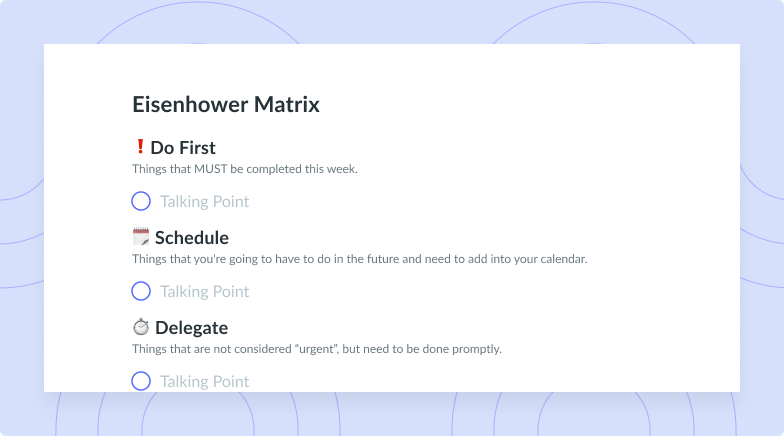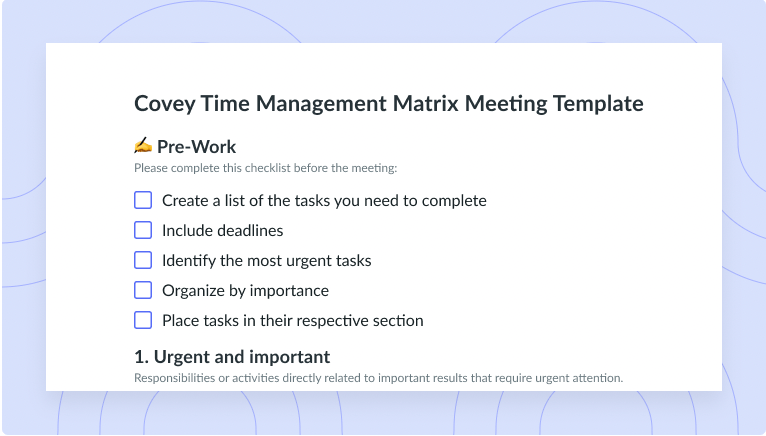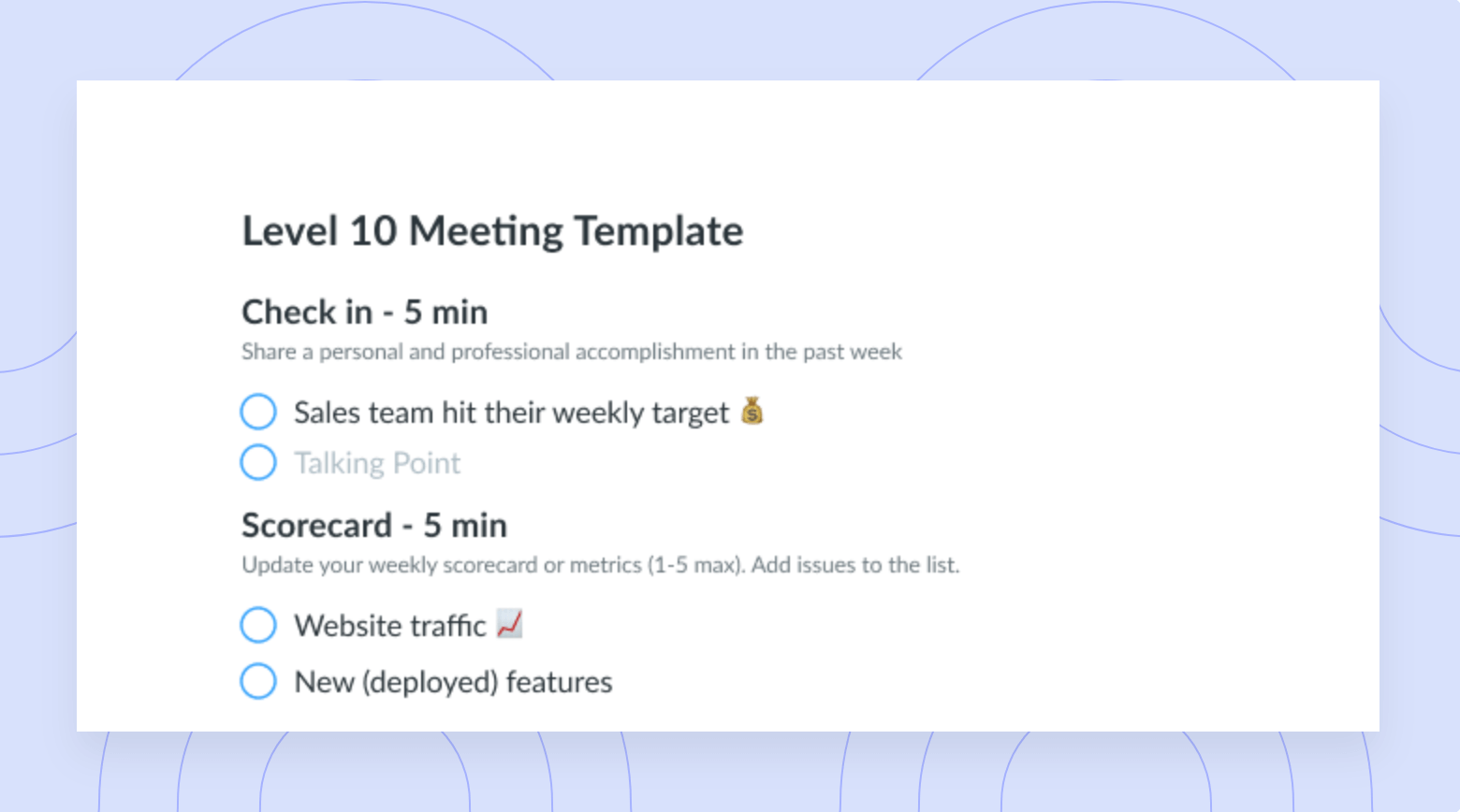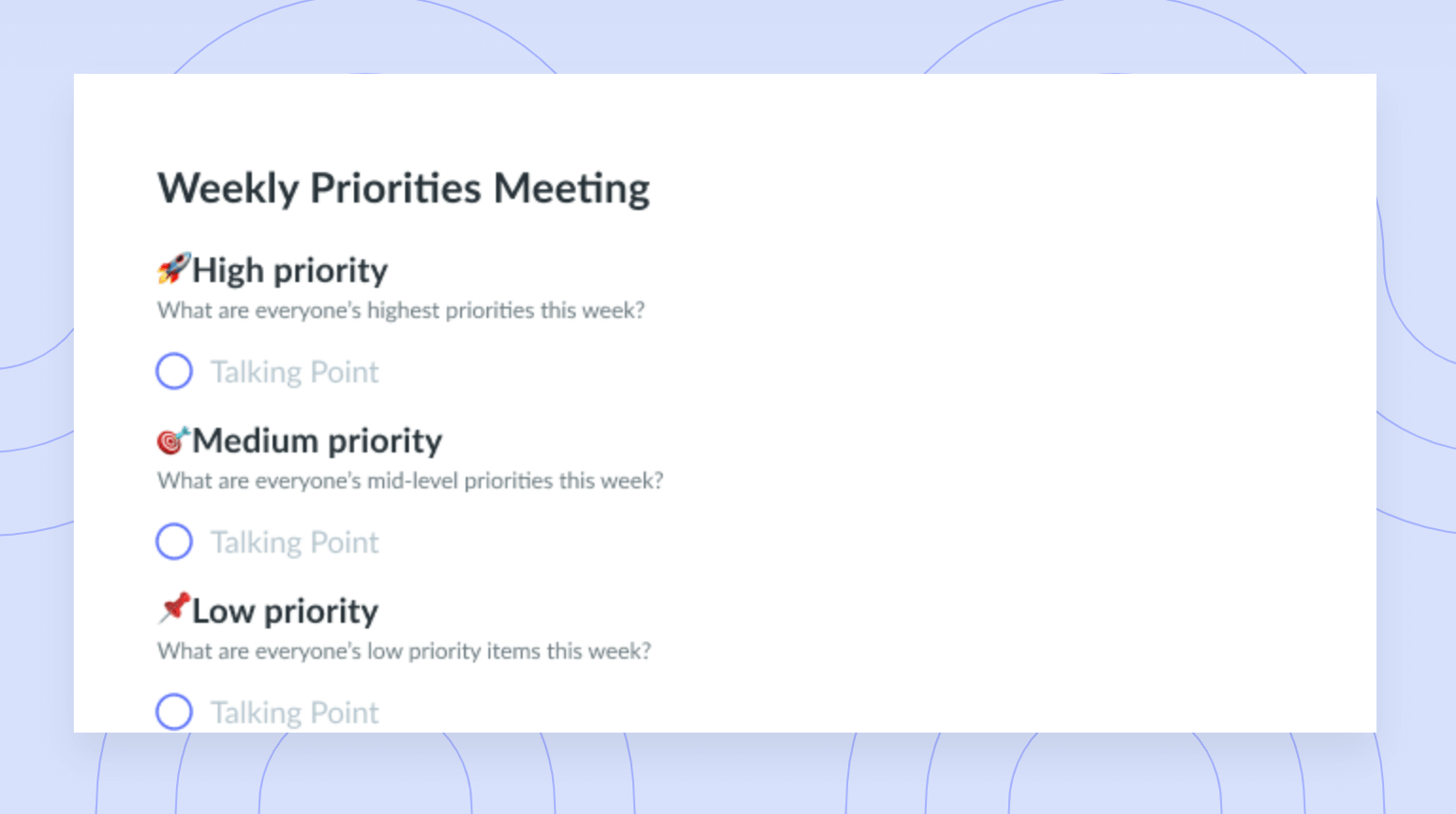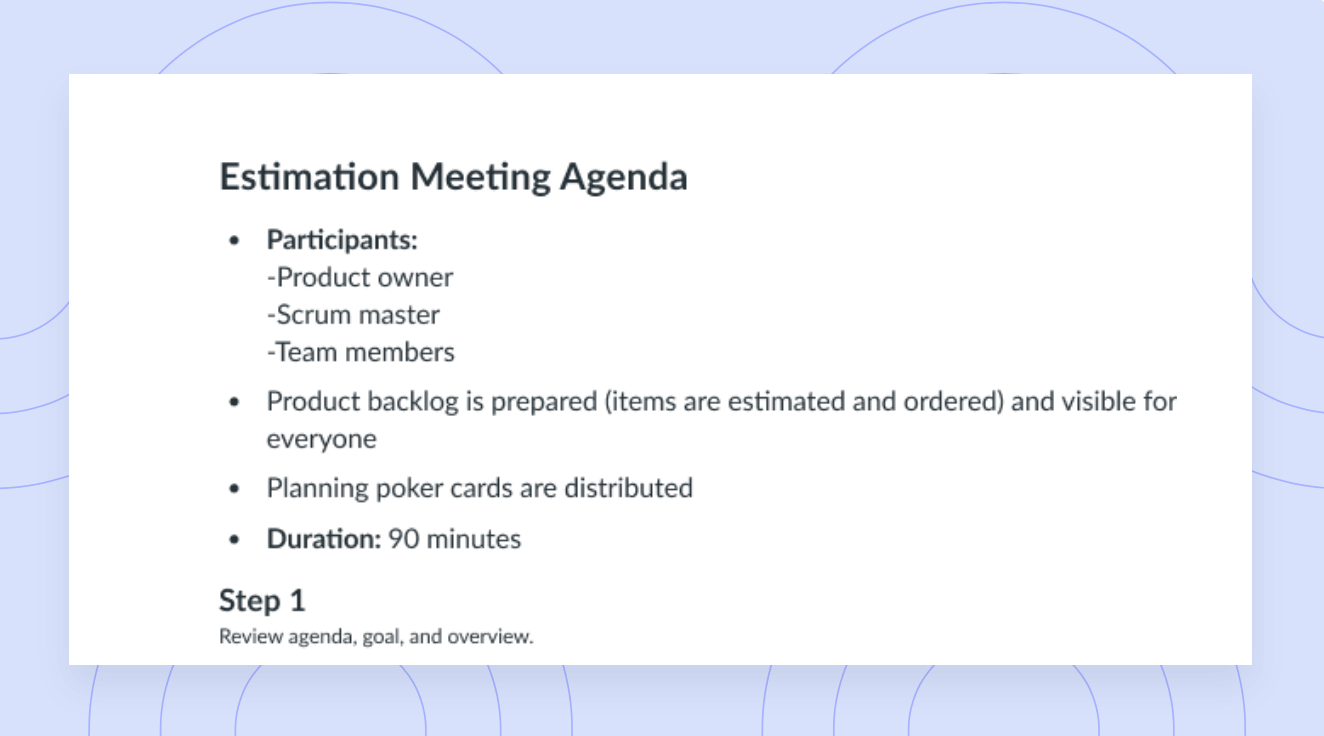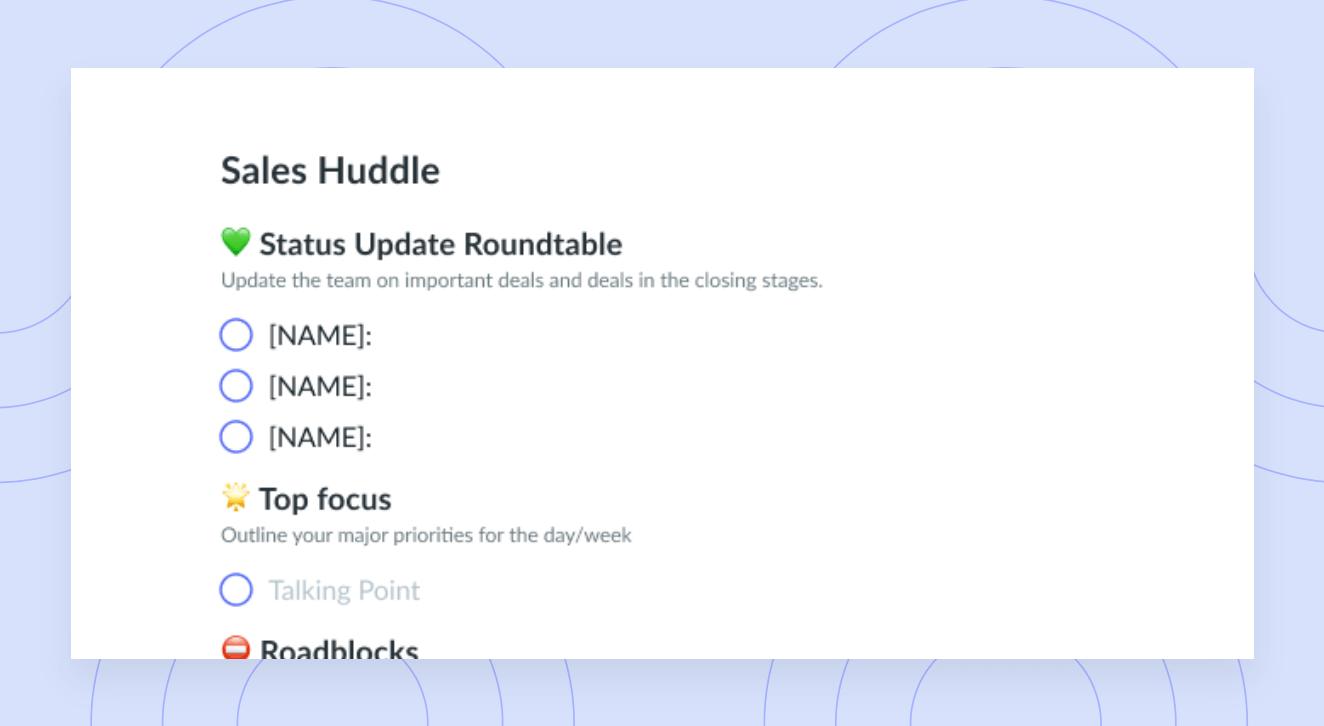How to Prioritize Tasks Effectively: A Step-by-Step Guide
Try these 11 best practices to efficiently prioritize tasks, get more done, and ensure that you are hitting your goals.
Understanding how to prioritize your work can seem pretty daunting when everything seems equally important. In order to manage your workload and ensure you are hitting your deadlines, it is important to find a prioritization method that works for you. In order to help you out, Fellow has created a step by step guide on how to prioritize tasks and keep on top of your workload.
Why is Prioritizing Important?
Prioritizing is important because it affects how effective you are in completing your work and meeting deadlines. As you and your team work together towards team goals, identifying priority tasks will gift you with more time and alleviate stress if you are feeling overwhelmed with a long list of things to get done. More time will allow you to be more productive, and therefore more effective in your role.
How to Prioritize Tasks
Knowing how to prioritize tasks can be challenging, but don’t worry! follow these steps to prioritize your tasks.
- Collect a list of all your tasks
- Identify urgent vs. important tasks
- Assess value to your team and company
- Reorganize your tasks based on deadlines
- Order daily tasks by estimated effort
- Consider the end-result
- Adapt quickly
- Know when to cut
- Avoid distractions
- Use a calendar
- Get help & delegate
1 Collect a list of all your tasks
This first step seems simple but is absolutely essential. Create a master list of each and everything that you can think of that needs to get done in the foreseeable future. How you create your list of tasks is up to you as long as it is easily updated and accessible to you at all times. This can be as simple as writing down all your tasks as action items in Fellow:
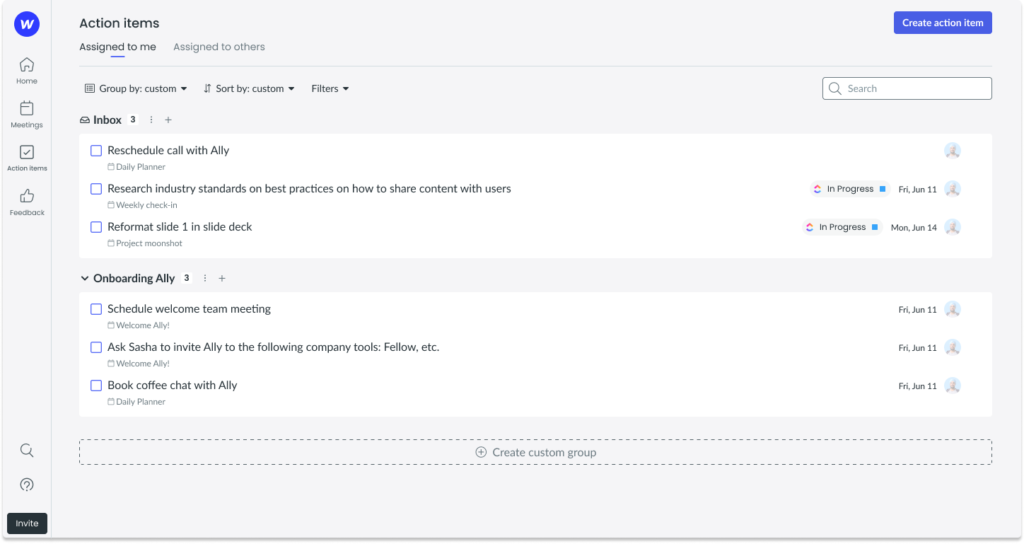
Now that you have your priority list, you can separate them according to timing. This means separating items into monthly, weekly, and daily deadlines.
2 Identify urgent vs. important tasks
After you’ve created a list of all of your priority tasks, it is time to identify which tasks are urgent and which ones are important. Items that need attention immediately are urgent. What’s left may be important or maybe something that you are taking on unnecessarily.
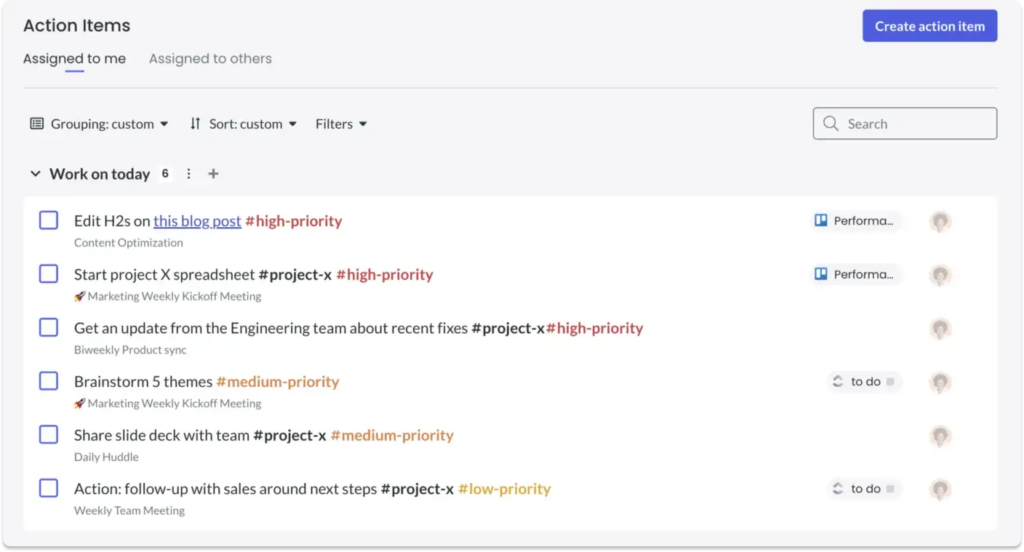
Be careful to only commit your time firstly to urgent items and then to important tasks. In a recent blog post by Rescue Time, they identify an effective way to organize what needs to be given attention first:
“Urgent and Important: Do these tasks as soon as possible
Important, but not urgent: Decide when you’ll do these and schedule it
Urgent, but not important: Delegate these tasks to someone else
Neither urgent nor important: Drop these from your schedule as soon as possible”
A reminder to look to complete tasks which are going to bear results, rather than simply checking items off a list.
3 Assess value to your team and company
Now that you’ve given priority to your urgent tasks, it’s time to shift gears towards your important tasks. Which item yields the highest value to your team and company as a whole? Answering this question will help you identify which task is most important to focus on.
Another thing that you can use to identify the level of importance of items on your to-do list is by considering how many people that item is going to affect. The more people being affected, the sooner you should get it done. Assessing value can also be identified through time management techniques such as the ABCDE method.
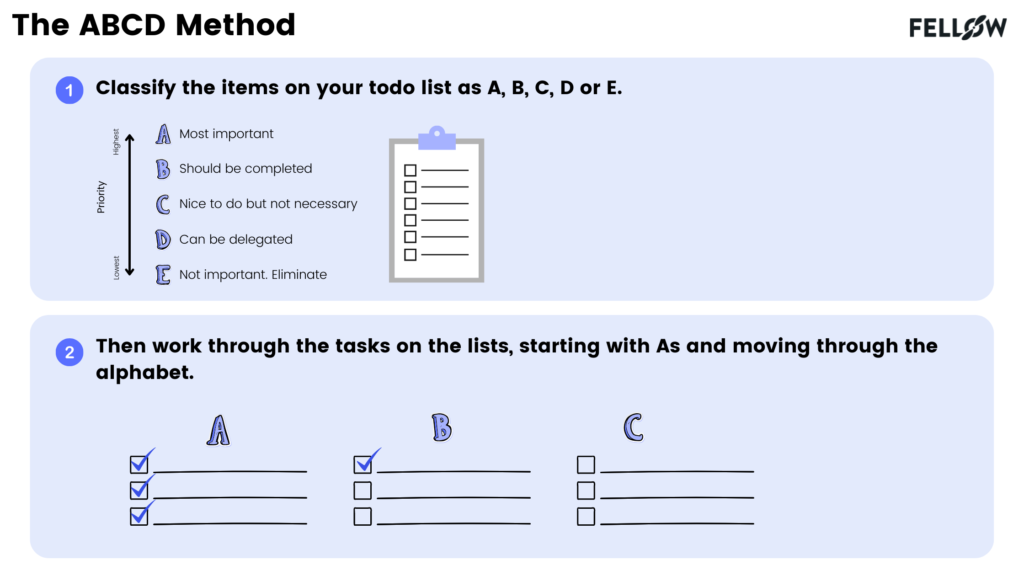
4 Reorganize your tasks based on deadlines
As we previously mentioned, it is super important to categorize your master list of tasks into monthly, weekly, and daily responsibilities. Considering deadlines that you’ve agreed to hit is the next part of the puzzle that helps to identify priority levels. Once you’ve separated urgent from important, assign due dates so that you can reorganize in order to meet those deadlines.

Prioritize getting action items done!
Assign due dates in Fellow to keep yourself accountable and organized.

Ensure that you are following up with your manager if you have tasks that are assigned without deadline dates so that you can keep on top of your responsibilities. A great way to keep on top of your deadlines is to schedule them into your calendar with reminders.
5 Order daily tasks by estimated effort
Different tasks require different efforts dedicated to them. If certain tasks seem to be equivalent in importance, try thinking about which one requires the most effort, and get started on that one first. As James Clear, author of Atomic Habits argues in an article for Buffer:
“Behavioral scientists have discovered that one of the most effective ways to create an enjoyable experience is to stack the painful parts of the experience early in the process. Psychologically, we prefer experiences that improve over time.”
Completing the lengthier task first will motivate you to move on to the smaller tasks, having already battled the beast.
6 Consider the end-result
Another thing you can consider when prioritizing your daily, weekly, and monthly tasks is the final outcome of those activities. If you know that doing something will have a big impact on your team’s results (even if it’s in the long-term), consider moving that item to the top of your to-do list. ⬆️
In the end, prioritizing is all about focusing on the things that will bring you and your team the highest return on investment (ROI). If you consider the end-result of your activities, you’ll always be working towards reaching your team’s highest potential.
7 Adapt quickly
Change is a constant that we must acknowledge and accept. After you’ve created your priority tasks, you should know that they will inevitably and surely change as things continue to evolve on that given project. A little rearranging never hurt anyone!
Where priority level changes, the urgent and important items on your priority list should remain the same. Remain adaptable to changes that are sure to come up but keep a focus on your top priorities, even if their order switches up a little bit.
8 Know when to cut
Most of us know the feeling of writing a to-do list, only to carry over 90% of the items to the next day, then over to the next day, until all of a sudden we’ve been staring at the same item for weeks. It’s normal if you’re unable to check everything off your priority list, so don’t fret. Once you’ve taken a good look (and a deep breath) at your important tasks, cut anything that cannot be completed that day. Move it away from your daily to-dos and onto your weekly or monthly priority list.
The most important thing you can do is focus on the “one thing” that will bring you and your team the highest impact. Even if this means that you’ll have to cut off some activities and items from your to-do list. ✂️
9 Avoid distractions
Avoiding distractions is key to staying focused on what is truly important and avoid getting sidetracked. Try and find a quiet place to work that is free from distractions. When possible, remove any items from your workspace that might break your concentration, such as televisions or personal items. Turn off notifications on your phone, computer, or other devices that may distract you. This includes email notifications, social media notifications, and pop-up ads. If you find it difficult to concentrate in noisy environments, consider using noise-cancelling headphones to block out distracting sounds.
10 Use a calendar
Using a calendar can help you manage your time effectively and stay organized. By scheduling your tasks and deadlines in a calendar, you can see at a glance what you need to focus on, prioritize your work based on urgency and importance, and avoid overcommitting yourself. We recommend regularly reviewing your calendar, then adjusting and reschedule tasks as needed, and block out dedicated time for focused work and breaks. By using a calendar to prioritize tasks, you can increase your productivity, reduce stress, and achieve your goals more efficiently.
11 Get help & delegate
Sometimes it’s important to delegate and ask for help in order to make it through your todo list in a timely manner. This approach not only maximizes productivity but also helps to build trust and foster a positive team dynamic. First prioritize tasks based on their level of urgency and importance. Next, clearly communicate the goals and expectations to team members and delegate tasks that align with their skills and abilities. When delegating it’s important to encourage open communication and provide regular feedback to ensure that the delegation is successful and that everyone is on the same page.
At some point, you’re going to get something you’ve never done before, because I’m going to hopefully be passing off my Legos to you as we grow. And the minute that high performer is given a task that they can’t execute well and are not supported well, they start feeling their confidence drops, something happens in their workflow. And that’s why it’s so important to just not assume that people can handle and tackle everything at the same level that they execute their tasks.
– Cristina Georgoulakis, Founder Outcomes Partner at 776
How to Effectively Prioritize Tasks to Get More Done
Learning how to prioritize tasks effectively is going to make you feel more in control of your workday. With more time, comes higher productivity and effectiveness. Finding a prioritization method that works for you will help you identify urgent from important tasks, assess their value, meet deadlines, and identify the level of effort required. It will also teach you to be more flexible and understand where you can cut tasks that do not require immediate attention. Save and refer back to this guide whenever you are feeling a little overwhelmed and need some direction.
Finally, don’t forget to check out Fellow’s full Action Items feature to organize your daily and weekly to-do lists!”
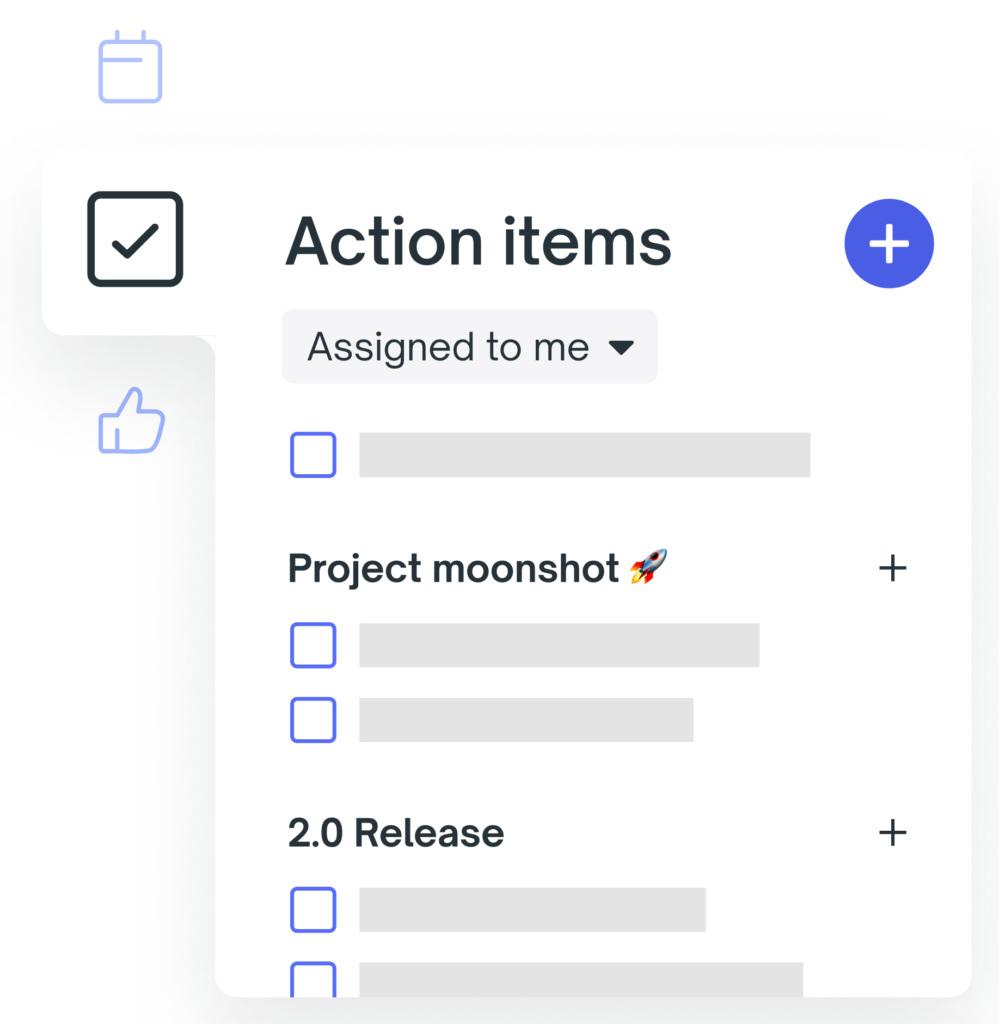




![The 5/25 Rule: How to Apply It [+ Example]](https://fellow.app/wp-content/uploads/2023/05/The-525-Rule2.jpg)




